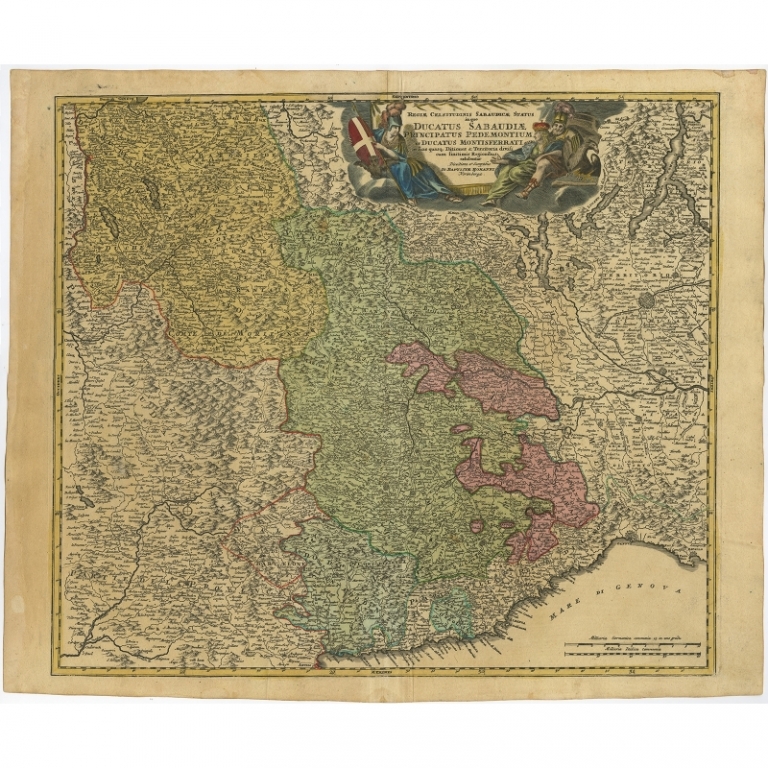FREE
WORLDWIDE
SHIPPING
No products
PCT-59831
Antique Map of the region of Savoy and Piedmont by Homann Heirs (c.1735)
- Condition: Good, given age. Damp stained at the top, mainly visible on verso. Staining and light soiling in the margins. A few minor creases. Bottom edge with a few tiny tears. Original middle fold as issued. General age-related toning and/or occasional minor defects from handling. Please study image carefully.
- Date: c.1735
- Overall size: 64 x 53.5 cm.
- Image size: 56.4 x 49.6 cm.
Worldwide
shipping
Description: Antique map titled 'Ducatus Sabaudiae, Principatus Pedemontium et ducatis Montisferrati (..).' Map of the Savoy and Piedmont regions, centered on Torino. The map coverage extends from Grenoble, Geneva, Die and Romans, to Genoa and Milan. Highly detailed, with excellent graphical representation of the mountains and other topography. Cartouche includes 5 coats of arms and an ornate allegorical scene. Source unknown, to be determined.
Artists and Engravers: Following the long period of Dutch domination, the Homann family became the most important map publishers in Germany in the eighteenth century, the business being founded by J.B. Homann in Nuremberg about the year 1702. Soon after publishing his first atlas in 1707 he became a member of the Berlin academy of Sciences and in 1715 he was appointed Geographer to the Emperor. After the founder's death in 1724, the firm was continued under the direction of his son until 1730 and was then bequeathed to his heirs on the condition that it trades under the name of Homann Heirs. The firm remained in being until the next century and had a wide influence on map publishing in Germany. Apart from the atlases the firm published a very large number of individual maps. The Homanns produced a Neuer Atlas in 1714, a Grosser Atlas in 1737, and an Atlas Maior with about 300 maps in 1780. They also issued a special Atlas of Germany with full sized plans of principal cities, school atlases and an Atlas of Silesia in 1750 with 20 maps.



